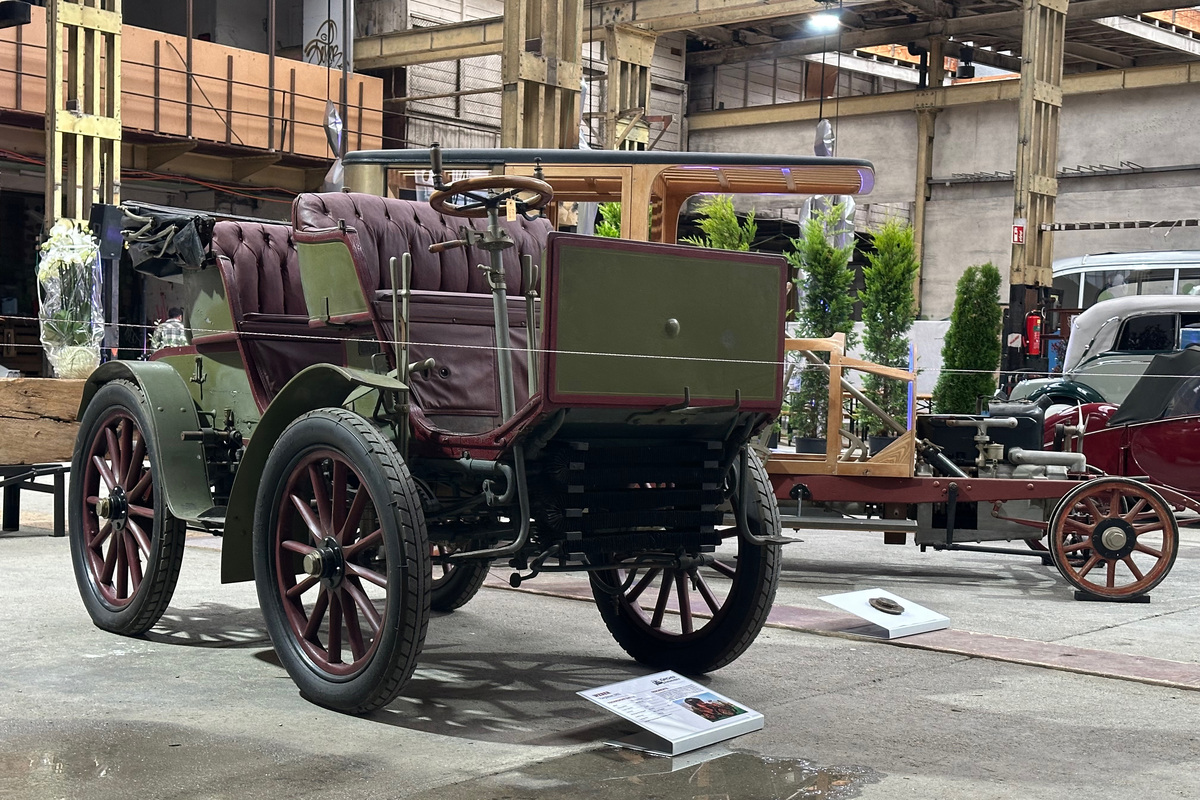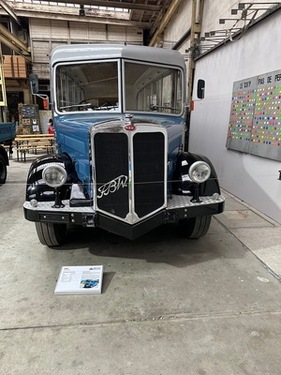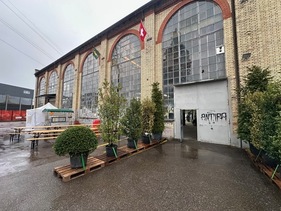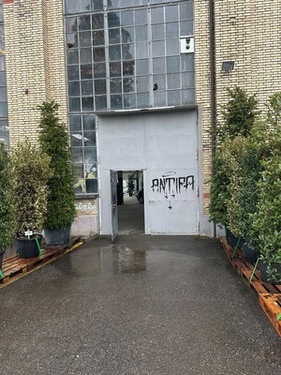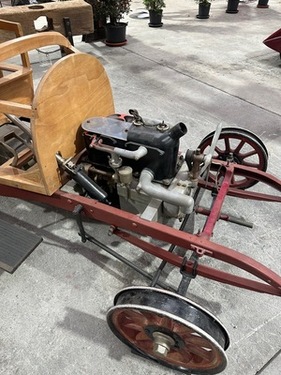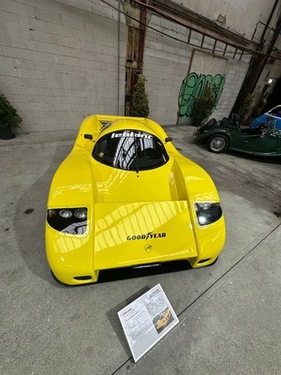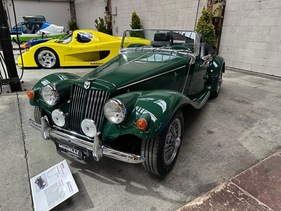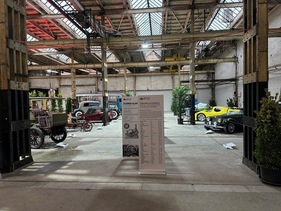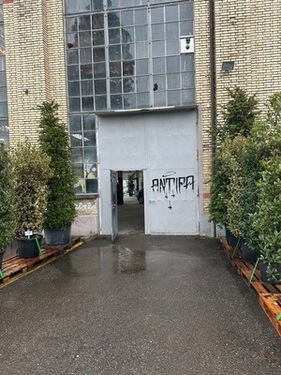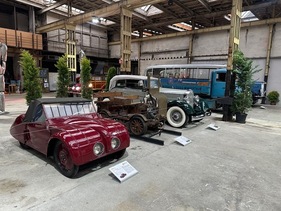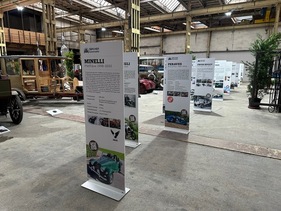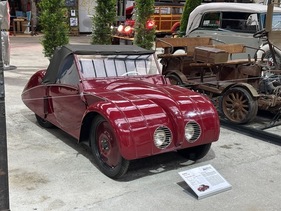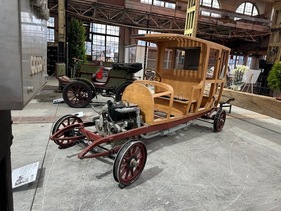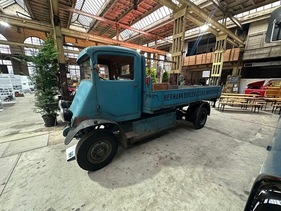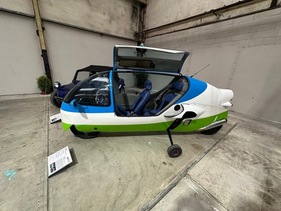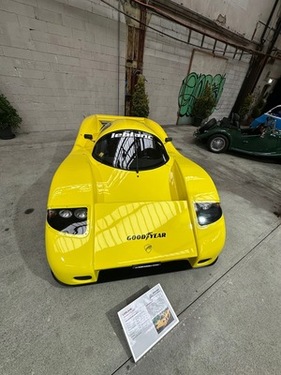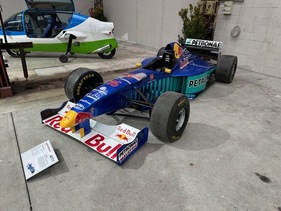Cars from Zurich, the exhibition in an old industrial hall in Zurich-Seebach, on the Gauss-Stierli site, has been showcasing some of the 39 or so well-known car manufacturers of the past and present in the canton of Zurich from 1 November until the end of January 2026. The aim is to commemorate industrial history and a driver of industrial progress in the 20th century in the historic halls on the Gauss-Stierli site.
A small team led by SHVF President Daniel Geissmann, with the support of various partners and in particular the new owner of the Gauss-Stierli site, real estate investor Werner Hofmann, put together a small exhibition of around 10 cars and a Zurich-made trolley in an ad hoc effort.
Organizing objects and printing the exhibition catalog
They would have had the exhibition together in about six weeks, Geissmann says during our visit. It's a cold, wet Sunday and it's about as cold in the old industrial hall as it is outside the open front door. The listed building at Schaffhauserstrasse 468 in 8052 Zurich has certainly seen better days, but it still remains fascinating because its sheer size and the almost ornate exterior with its brick façade make it a real eye-catcher.s almost decorative exterior with its brick façade, it belongs to an era when industrial plants with their smoking chimneys had begun to promise a prosperous future everywhere in the then suburbs of Zurich.
Built in the railroad triangle between the then Nordostbahn and the Nationalbahn in 1899, the factory site was virtually enclosed between the rails when the two railroad lines were connected in 1909. This is still the case today. To visit the site, you first have to cross a guarded level crossing at the end of the short access road. There is plenty of space on the site itself, so finding a parking space should not be a problem.
Indoor romance
A former London cab points the way to the entrance door to the hall, which surprises inside with its clear height and plenty of natural light. The riveted iron girders of the roof construction may look a little rusty, but they are still robust. A sound installation simulates the sounds of a factory hall. Fixed benches form a place to linger, the cars are quickly found, divided into two rows between the pillars.
In between, Stehlen reports on the 39 Zurich car brands identified by the curators, although today little more than a picture and a few details of their existence and production location are known for some of them.
Many of the objects on display come from the Museum of Transport's collection, which in turn received some of the vehicles as gifts from the companies that were once involved in their production.
A good example is the Rapid, the small car designed by Josef Ganz while he was living in exile in Zurich, of which a good three dozen were built shortly after the Second World War.
Turicum and Fischer
In 1904, Martin Fischer and Paul Vorbrodt founded a company bearing the Latin name of Zurich: Turicum. In 1907, the manufacturer moved to Uster, Martin Fischer separated from the company in 1908 and founded his own car factory, Fischer. In the 1960s, a car from this production was rebuilt as a cutaway model by apprentices from the Swiss Coachbuilders' Association and donated to the Swiss Museum of Transport; at the time, it served as an example of classic coachbuilding with wood as the base material, onto which the hand-dented sheet metal was applied.
A car from the pioneering phase of the horseless carriage is the Weber from 1899, the design of the company from Uster impresses with its continuously variable belt drive. This vehicle also comes from the depot of the Swiss Museum of Transport.
Rail and electricity
Not a car, but a trolley with a V2 engine from MAG was built by the Asper company around 1920. The meter-gauge vehicle was once used for inspection trips on the mountain route of the former Furka-Oberalp-Bahn FO (now the Matterhorn-Gotthard-Bahn) and had a cogwheel for the steep sections for this purpose. The vehicle is said to have been in operation with three forward and three reverse gears until 1960.

The Tribelhorn truck from Maschinenfabrik Bühler in Winterthur is of a completely different caliber. Built in 1919 and fitted with a new cab in the 1930s, the vehicle provided transport services between the factory and the loading ramp of the nearest goods station. The electric truck was one of a series of around 700 vehicles built from 1906 in Feldbach on Lake Zurich by Johann Albert Tribelhorn, from 1918 in the immediate vicinity of the Arbenz motor car factory in Zurich. His company was merged into EFAG in 1923 and was based in Zurich's Badenerstrasse until 1927, after which it moved to Oerlikon. In 1937, the then sales manager Hans Weiss bought the company and continued to run it as NEFAG. After further stations, for example via MOWAG, the family tree of this manufacturer is still alive today with Klingler Fahrzeugbau AG in Stans.
Luxury, lateral thinking and leisure fun
Werner Risch imported, assembled and sold Packard automobiles in the Rote Fabrik, now a cultural center of the city of Zurich in Wollishofen. Although it was primarily complete chassis that were assembled in Switzerland, some CKD kits were also assembled in Zurich, the "Swiss Packard". Although the example on display is not one of these, the car with its eight-cylinder engine was sold in Zurich and then assembled by the Hermann Graber company in Wichtrach in the canton of Bern.
Swiss engineer Arnold Wagner's Peraves was a very unusual vehicle. Powered by a normal motorcycle engine, in this case a BMW K100, his single-track vehicle with extendable support wheels and a fully enclosed, aerodynamic cabin reached speeds comparable to a super sports car of the time. By 2016, 185 such vehicles had been built by hand, and an electrified version has been built in the Czech Republic since 2017.
A replica of the MG TF with state-of-the-art technology was built by Garage Minelli in Pfäffikon ZH between 1998 and 2001. Around 16 of the surprisingly close-to-the-original roadster were built.
The Leblanc Caroline GTR points in a completely different direction from leisurely cruising. Built by Rolf Wyss (Leblanc refers to his family name) in 1999, the car is nothing less than a road-legal sports prototype, insane and fascinating at the same time with 512 hp from a two-liter turbo engine and a weight of just 785 kilograms.
Zurich inspiration and management
Although the Microlino, the electric cabin scooter inspired by the Isetta, is built in Italy, the company headquarters and management of the Microlino are located in Küsnacht on Lake Zurich. The Ouboter family has surprised the world with their idea of a small, yet perfectly weather-protected city scooter with overland qualities - the thing runs at over 90 km/h and is therefore suitable for the highway - and several thousand units have already been delivered and are on the road.
And of course, a Sauber Formula 1 racing car from Hinwil is not to be missed in the exhibition. Just as with the Microlino, this story is far from over and ensures that the canton of Zurich not only has to bear a lot of car traffic due to its importance, but also remains significant as a location for Swiss vehicle production.
This is the conclusion after a visit to the Gauss-Stierli-Areal, which is particularly worthwhile if you happen to be in the area and want to treat yourself to another short trip. The exhibition is currently scheduled to run until 16 November, but the organizers plan to continue it until the end of January if interest remains high. Admission is basically free, but there will be a collection at the door in aid of the SHVF's young4vintage program to promote young talent.
More information is available here
